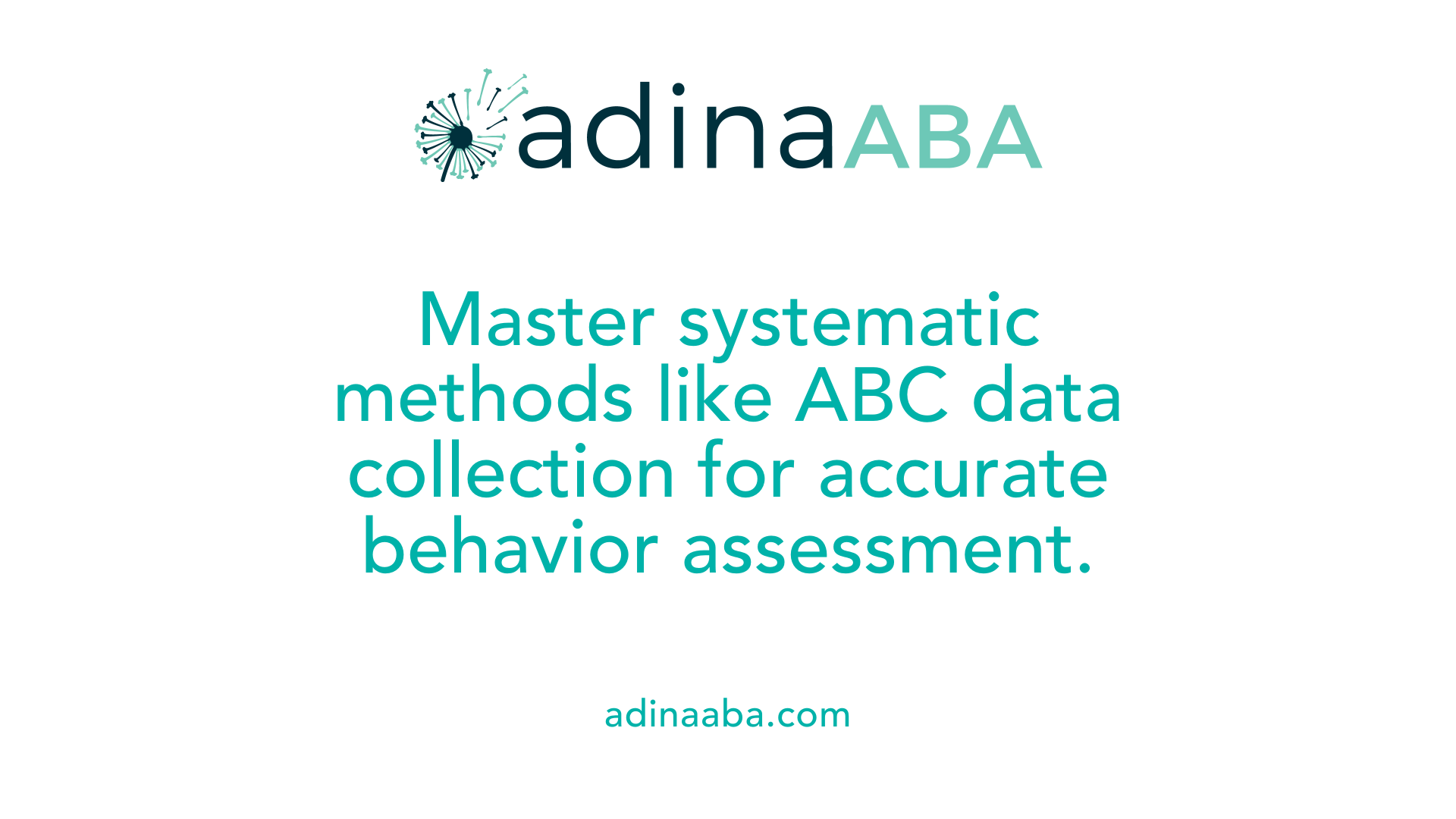How to identify and replace escape behaviors

A Guide to Recognizing and Replacing Escape Behaviors
Escape behaviors are common among individuals with developmental and behavioral challenges, often manifesting as tantrums, refusal, or other avoidance strategies to escape or avoid aversive stimuli. Proper identification and effective replacement strategies can improve engagement, reduce problematic behaviors, and foster independence. This article provides a comprehensive overview of how to accurately identify escape behaviors, assess their functions, and implement appropriate interventions that promote functional communication and adaptive skills.
Identifying Escape Behaviors Through Functional Analysis

How can escape behaviors be identified and assessed?
Escape behaviors are actions performed by individuals to avoid or escape from an unpleasant or challenging situation. To identify these behaviors accurately, professionals often rely on a process called Functional Behavior Assessment (FBA). This involves collecting detailed data on the context in which the behavior occurs. A common method is recording ABC data — that is, recording the Antecedents (what happens before the behavior), the Behavior itself, and the Consequences (what happens after).
By analyzing these components, educators and therapists can determine if the behavior serves the function of escaping or avoiding a task or situation. For example, if a student only tantrums or refuses whenever a difficult task is presented, and the behavior results in removal from the task, it’s likely an escape behavior.
Assessing the behavior involves observing the pattern over time, noting specific features such as duration, frequency, and intensity. These measurements help to establish a clear picture of how often the behavior occurs, how long it lasts, and how severe it is. Repeated patterns tied to particular antecedents—like difficult assignments or sensory overload—support the hypothesis that the behavior functions to escape.
Differentiating escape behaviors from attention-seeking actions is essential. Attention-seeking behaviors might occur in contexts where the individual receives social attention, even if negative. In contrast, escape behaviors consistently happen in response to specific tasks or demands and result in the removal of the difficult activity. Careful analysis of the patterns, along with the use of functional behavior assessments, guides the development of tailored interventions.
Once behaviors are identified, ongoing assessment of their frequency, duration, and intensity provides insight into their severity and helps track progress over time. This data is critical in designing effective strategies, such as teaching alternative ways to request breaks, using visual supports like break cards, and providing choices to make tasks more engaging.
In summary, assessing escape behaviors involves a detailed look at the antecedents and consequences surrounding the actions, and measuring how and when they occur. Proper identification supports the creation of interventions that teach students appropriate replacement behaviors, ultimately reducing escape-driven maladaptive actions and promoting positive, functional skills.
Effective Assessment and Data Collection Methods

How can escape behaviors be identified and assessed?
Recognizing escape behaviors involves careful observation and systematic data collection. The primary method used is ABC data collection, which stands for Antecedent-Behavior-Consequence. This approach involves recording what happens immediately before (antecedent) and after (consequence) the behavior to understand its function.
To identify whether a behavior is escape-related, observe if the behavior occurs when the individual faces a challenging task or demand, and whether it results in the removal or avoidance of that task. Differentiating escape from attention-seeking behaviors requires analyzing the context — for example, does the behavior occur more often during difficult tasks and lead to escape, or is it more linked to gaining attention?
Functional Behavior Assessment (FBA) plays a vital role in this process. Conducted through direct observation and interviews, FBA helps formulate hypotheses about why a behavior occurs. Measuring behaviors involves noting their frequency (how often it happens), duration (how long it lasts), and pattern (when and under what conditions it occurs). By understanding these aspects, educators and therapists can design interventions focused on teaching appropriate replacement behaviors, such as requesting a break or using visual cues.
Identifying the function of escape behaviors is crucial because it guides the development of effective strategies that address the student’s underlying needs rather than just the behavior itself.
Strategies for Proactive and Reactive Interventions

How can providing regular and preferred breaks help reduce escape behaviors?
Offering frequent and meaningful breaks is one of the most effective ways to address escape behaviors. When students are allowed to take scheduled breaks, especially from difficult or aversive tasks, they are less likely to resort to maladaptive escape behaviors such as tantrums or refusal.
Breaks should be tailored to each student's preferences, making them reinforcing and desirable. For example, some students may prefer sensory activities, while others might enjoy social interactions or physical movement. By identifying what motivates the individual, educators can incorporate these preferences into their break plans.
Initially, it’s important to honor each request for a break to build trust and ensure that the student experiences the break as a positive outcome. Over time, the frequency of providing breaks can be gradually faded, with expectations set for the student to request them appropriately. This process helps develop functional communication skills, replacing challenging escape behaviors.
How do visual supports and schedules aid in preventing escape behaviors?
Visual supports, including visual schedules, timers, and cue cards, serve as powerful tools in reducing anxiety and avoiding behaviors driven by task uncertainty or transition difficulties. Visual schedules provide a clear, predictable sequence of activities, helping students understand what comes next.
For students with limited verbal skills, visual supports act as prompts for requesting breaks or assistance. For instance, a break card or a visual cue for
Teaching Replacement Behaviors to Reduce Escape Actions

How can replacement behaviors be used to address escape behaviors?
Replacement behaviors serve as a positive alternative for individuals exhibiting escape behaviors—actions performed to avoid or delay unpleasant tasks or situations. These behaviors are designed to fulfill the same function as the problematic behavior, such as escaping from difficult tasks, but in a socially acceptable and effective manner.
To address escape behaviors, it is crucial first to identify the specific function behind the behavior. Once understood, you can teach a corresponding replacement behavior that meets the same need. For example, if a student avoids work by throwing tantrums, teaching them to ask for a break using appropriate words, gestures, or visual supports provides an effective alternative.
Modeling and rehearsal are core techniques in this process. Demonstrating the desired behavior and practicing it repeatedly helps in embedding the new skill. For nonverbal students, visual aids like break cards, social stories, or visual prompts can facilitate understanding and encourage them to request breaks or assistance consistently.
Reinforcing these replacement behaviors consistently is vital. Immediate and meaningful reinforcement makes it more likely that the individual will choose the appropriate strategy over escape actions. For instance, praising and immediately granting a break when the student uses the learned request reinforces its utility and encourages continued use.
Ensuring behaviors are developmentally appropriate and aligned with the individual’s communication abilities enhances their effectiveness. For example, using simple gestures or visual cues for young children or those with limited verbal skills makes the process accessible.
In summary, replacing escape behaviors with functional communication strategies involves identifying the behavior’s purpose, teaching socially valid alternatives through modeling and practice, and providing consistent reinforcement. This approach not only reduces maladaptive escape actions but also promotes independence and effective communication skills.
Principles of Behavior Analysis Underpinning Interventions

What principles of behavior analysis underpin interventions for escape behaviors?
Interventions for escape behaviors are grounded in fundamental behavior analysis principles that help understand and modify these actions effectively. Central to these interventions is the assessment process, particularly the Functional Behavior Assessment (FBA). This assessment aims to identify the specific function of an escape or avoidance behavior, determining whether it is performed to escape a task, demand, or aversive stimulus.
Once the function is understood, treatment strategies focus on reinforcing more appropriate ways for the individual to meet their needs. Reinforcement involves teaching and strengthening alternative behaviors that serve the same purpose as the problematic behavior. For example, teaching a student to request a break verbally or with visual supports provides a positive way to escape the task, reducing reliance on maladaptive escape behaviors.
Extinction plays a vital role as well, which entails withholding reinforcement for escape behaviors. If the student's behavior no longer results in escape, the behavior is less likely to persist over time. Differential reinforcement further supports this process by consistently reinforcing the replacement behaviors while placing the escape behaviors on extinction.
Prompting strategies, such as visual cues or verbal prompts, are used initially to teach desired behaviors, followed by systematic fading to promote independence. Throughout intervention, ongoing data collection and regular review of progress are essential. This data guides modifications to the intervention plan, ensuring it remains effective for the individual.
Additional methods like demand fading, where tasks are gradually increased in difficulty, and noncontingent reinforcement, where breaks or preferred items are provided on a fixed schedule, can also help reduce the motivation for escape behaviors. These evidence-based practices, when integrated thoughtfully, create a comprehensive framework for reducing escape-maintained behaviors and fostering adaptive responses.
Utilizing Tools and Resources for Systematic Intervention

What tools and resources are available for behavior assessment and intervention?
A variety of assessment instruments and resources are essential for understanding and managing challenging behaviors effectively. Standardized assessments like the ABAS-3 (Adaptive Behavior Assessment System), BASC-3 (Behavior Assessment System for Children), Conners 4, GARS-3, and Sensory Profile 2 provide comprehensive insights into a child's behavior, social-emotional skills, and sensory processing patterns. These tools help identify the underlying causes of behaviors, guiding targeted interventions.
Functional Behavioral Assessments (FBAs) are critical components of behavioral analysis. They employ indirect methods, such as interviews with caregivers and educators, record reviews, and checklists, along with direct observation tools like ABC (Antecedent-Behavior-Consequence) charts and structured rating scales. These methods enable practitioners to hypothesize the function of behaviors—whether to escape, gain attention, access tangibles, or satisfy sensory needs.
Evidence-based frameworks such as Positive Behavioral Interventions and Supports (PBIS) offer systematic strategies for behavioral management. PBIS incorporates the development of Behavior Support Plans (BSPs) that outline specific interventions tailored to individual needs. Fidelity assessments ensure these plans are implemented as designed, promoting consistency and success.
Resources for developing Behavior Intervention Plans (BIPs) include templates, training modules, and instructional materials. Social stories, visual cues, and visual schedules serve as supportive tools to enhance understanding and compliance. These resources help teach appropriate replacement behaviors, such as requesting a break or help, and reinforce positive actions.
For ongoing progress monitoring, a range of tools and data collection methods are utilized. These include checklists, digital apps, and graphing systems that track behavior frequency, duration, and intensity over time. Regular review of this data supports data-based decision-making, enabling practitioners to adapt interventions for optimal effectiveness.
Ultimately, these tools and resources foster a structured approach to behavior management. They support educators, therapists, and caregivers in implementing proactive, evidence-based strategies that reduce problematic behaviors and promote skill development across various environments.
Implementing Strategies in Educational Settings for Long-term Change

How can educators implement replacement behaviors to reduce escape behaviors in educational settings?
To effectively replace escape behaviors with appropriate alternatives, educators need a systematic approach grounded in functional analysis. The first step is conducting a thorough Functional Behavior Assessment (FBA) to understand why a student engages in escape behaviors. This assessment involves observing the behavior, recording antecedents and consequences, and gathering information from caregivers and teachers to hypothesize the behavior's function.
Once the function is identified, such as escape or avoidance, the next step is to teach a functionally equivalent replacement behavior (FERB). For escape functions, this might include teaching the student to request a break by using words, gestures, or visual cues. For students with limited verbal skills, tools like break cards or visual schedules can facilitate communication.
Teaching these replacement behaviors should be done via direct instruction, modeling, role-play, and rehearsal, ideally following the Behavior Skill Training (BST) model. Reinforcement is crucial at this phase; educators must promptly reinforce the replacement behavior whenever it occurs, while concurrently minimizing reinforcement for escape or problematic behaviors. This approach encourages students to choose the socially acceptable alternative over escape behaviors.
To ensure consistency and promote generalization, these replacement behaviors should be practiced across different settings, such as classrooms, playgrounds, and therapy sessions. Gradually fading prompts and reinforcement helps students become independent in requesting breaks or assistance, reducing reliance on escape behaviors.
Data collection plays a vital role throughout this process. Regular review of progress through systematic data tracking helps determine if the replacement behavior is maintaining and if adjustments are needed. Adaptations might include increasing reinforcement, modifying the replacement behavior to be more effective, or altering the environment to reduce triggers.
In summary, educators can implement successful long-term strategies by thoroughly assessing behaviors, teaching appropriate replacements, reinforcing consistently, ensuring skills generalize, and continuously reviewing data. These steps create a supportive learning environment where students can express their needs constructively and participate actively in educational activities.
Supporting Long-Term Success in Behavior Modification
Effectively managing escape behaviors requires a thorough understanding of their function, precise assessment, and the systematic implementation of replacement behaviors. By leveraging behavior analysis principles, utilizing appropriate tools, and fostering an environment that promotes functional communication, educators and caregivers can significantly reduce escape-maintained actions. Consistent reinforcement, ongoing data collection, and adjustments tailored to individual needs will ensure sustainable progress, ultimately empowering individuals to express their needs appropriately and participate more fully in their educational and social environments.
References
- Escape Behaviors {Replacement Behaviors} - The Autism Helper
- Replacement Behaviors
- 3 Interventions to Decrease Escape Behaviors - Simply Special Ed
- Understanding and Managing Escape Behaviors in ABA Therapy
- ABA Behind the Scenes: Replacement Behavior - Verbal Beginnings
- [PDF] Selecting Effective Replacement Behaviors
- Replacement Behavior Strategies: Defining Effective Breaks
- What are Escape Behaviors?
More Resources
Expert Clinicians
Get started today ->






